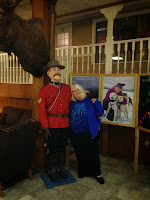Today I can only write about what has been occupying my time and
my heart for the last few weeks- the miracle of our Love Wins Conference.
It is a week before the event even takes place, and already so many incredible things have taken place. In no particular order, they include:
·
It is sold out
·
Three Universities are cooperating to make this
happen- Central Connecticut State University, the University of Hartford and
Western Connecticut State University
·
The University of Hartford, in addition to all
their other support, is supplying student volunteers who will direct and escort
people throughout the day. The University has purchased purple hats, scarves
and gloves for all these volunteers.
·
We have wonderful sponsors such as Stanley Works
and Siracusa who have enabled families, foster families, and Klingberg
employees to attend, as well as helping us in many other ways.
·
We are actually streaming the morning session to
the three universities and our Risking Connection agencies
·
Bruce Perry is speaking in Connecticut for the
first time
·
Jimmy Greene, Ana Grace’s
father will be performing with some friends, and there will be dance and other
music
·
The wonderful breakout speakers will bring us
news of compassion at work in many arenas: schools, university, therapy provision,
urban settings, the larger community and in the family
·
The parking and logistics have been worked out
and are manageable
·
There are over 80 Klingberg volunteers, and I am
proud to have so much talent and passion to draw on for moderators, table
hosts, facilitators, registration workers, and many other jobs. People are
saying they are honored to participate.
·
There are beautiful centerpieces, gifts, hearts,
and decorations and purple is everywhere
·
The audience is incredibly diverse, from
teachers to federal employees to Deans of Universities to families to church members
to Sandy Hook community members to representatives of foundations to therapists
to judges.
And most importantly, we have the miracle of the Márquez-Greene
family, whose event this is.
Nelba, Jimmy and Isaiah will bring their message of
hope, of wrestling good from this tragedy, of the importance of love. Jimmy
will bring the music which will lift our hearts. Nelba will speak of her
experience. Isaiah will attend, and he is the only boy I know who is a hockey
goalie and a musician and can defeat someone in Connect Four in six moves while
singing the Star Spangled Banner.
And the conference above all represents the miracle of
Ana Grace, whose goal for her year was to tell stories, and whose story the
conference both tells and epitomizes.
I am so proud to be part of this!









